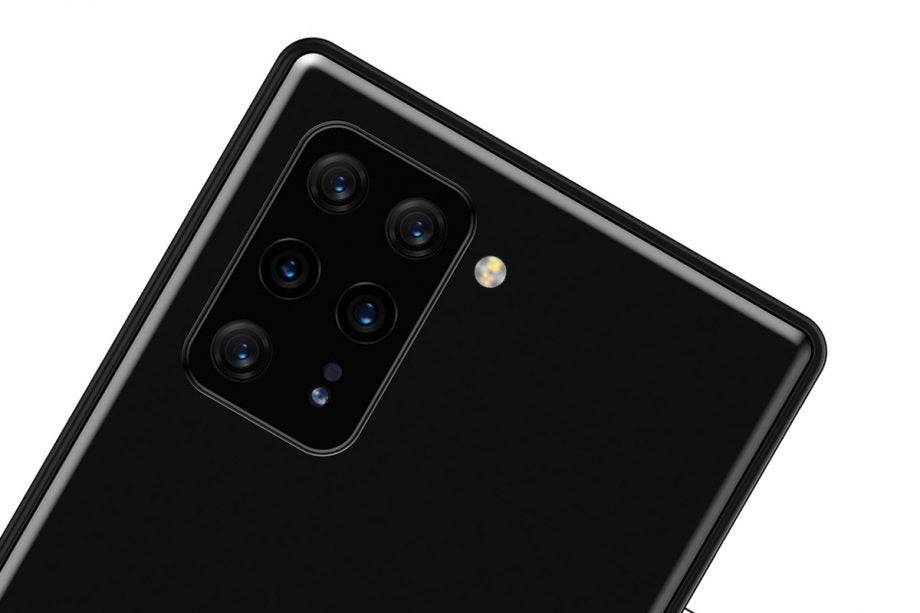Sony Xperia 2 could launch with a ridiculous amount of cameras

A newly-leaked render suggests that Sony might be working on an Xperia smartphone with a whopping eight cameras – two on the front and six on the back – if the imagery and accompanying information is to be believed.
According to Twitter tipster @Samsung_News_ (a.k.a. Max J.) we’ve been presented with rendered imagery showing the front and back of an as yet unknown Xperia device.
Its front certainly resembles the current Xperia 10 and Xperia 1 lines, with an apparent 21:9 aspect ratio and notch-free display. This would lend credence to the likelihood of this device’s existence and better yet, that we might see it in 2019. Could this be the Xperia 2?
Sony does change up its design language fairly frequently, but it usually lasts for at least two generations of flagship. With the Xperia 1 steering away from the Xperia XZ3‘s more organic forms.
As I mentioned last week there's going to be a new Sony phone. Today I heard some things regarding it's camera specs:
The specs might be different in the final product do to this device still being in development. The images are based on imagination.
Enjoy the specs!? pic.twitter.com/pKWR7L9dTT
— Max J. (@Samsung_News_) June 18, 2019
Set into the top bezel are supposedly two sensors: a standard 10-megapixel RGB front-facing camera (up from 8-megapixels on the Xperia 1) and a 0.3-megapixel ToF (time of flight) camera – a component which is usually used as a dedicated depth-sensing module, used to add bokeh or background blur to shots.
Related: What is a ToF camera?
Flip the phone over and its most standout design element is immediately apparent. Not unlike the rumoured iPhone 11 and Google Pixel 4, Sony may be toying with using a large, squared camera module. However, on this mysterious Xperia, it’s more of a rectangle, in order to accommodate an array of six(!) camera modules.
@Samsung_News_ supports the images with a rundown of the sensor size and aperture of each camera on the phone’s back.
There’s a 48-megapixel f/1.2 to f/2.4 sensor, which is assumed to be the phone’s primary camera, while another variable aperture 12-megapixel f/1.2 to f/2.4 sensor also features. In addition, there’s a 20-megapixel f/2.4 offering, an 8-megapixel f/2.4 offering, a 16-megapixel f/2.4 entry and to round things out another ToF sensor, this time a higher resolution 0.5-megapixel unit.
Considering the Xperia 1 was unusual in that its three rear cameras shared in the same 12-megapixel resolution (which is appreciated for quality and consistency’s sake), the near-random assortment of sensor resolutions here is perplexing.
With so many camera sensors, there’s a chance that this is our first look at the collaborative efforts of Sony’s mobile team and the computational photography specialists at Light, responsible for the 16-sensored Light L16 camera. They’re the same company that partnered with Nokia to create the Nokia 9 PureView, an ill-received flagship with a nevertheless eye-catching seven-sensor rear camera setup.
- Related: Best camera phones 2019
With regards to the question “how many cameras is too many for a smartphone?” phones like the 9 PureView, Huawei P30 Pro, Samsung Galaxy Fold have all made fairly compelling cases for the versatility that extra sensors bring to the table.
As for whether or not there’s any weight to this particular @Samsung_News_ has had limited success with leaks and rumours in the past, so there may be a glimmer of truth to what we see here, compounded by its timing in relation to Sony’s partnership with Light, which was announced back in February 2019.


